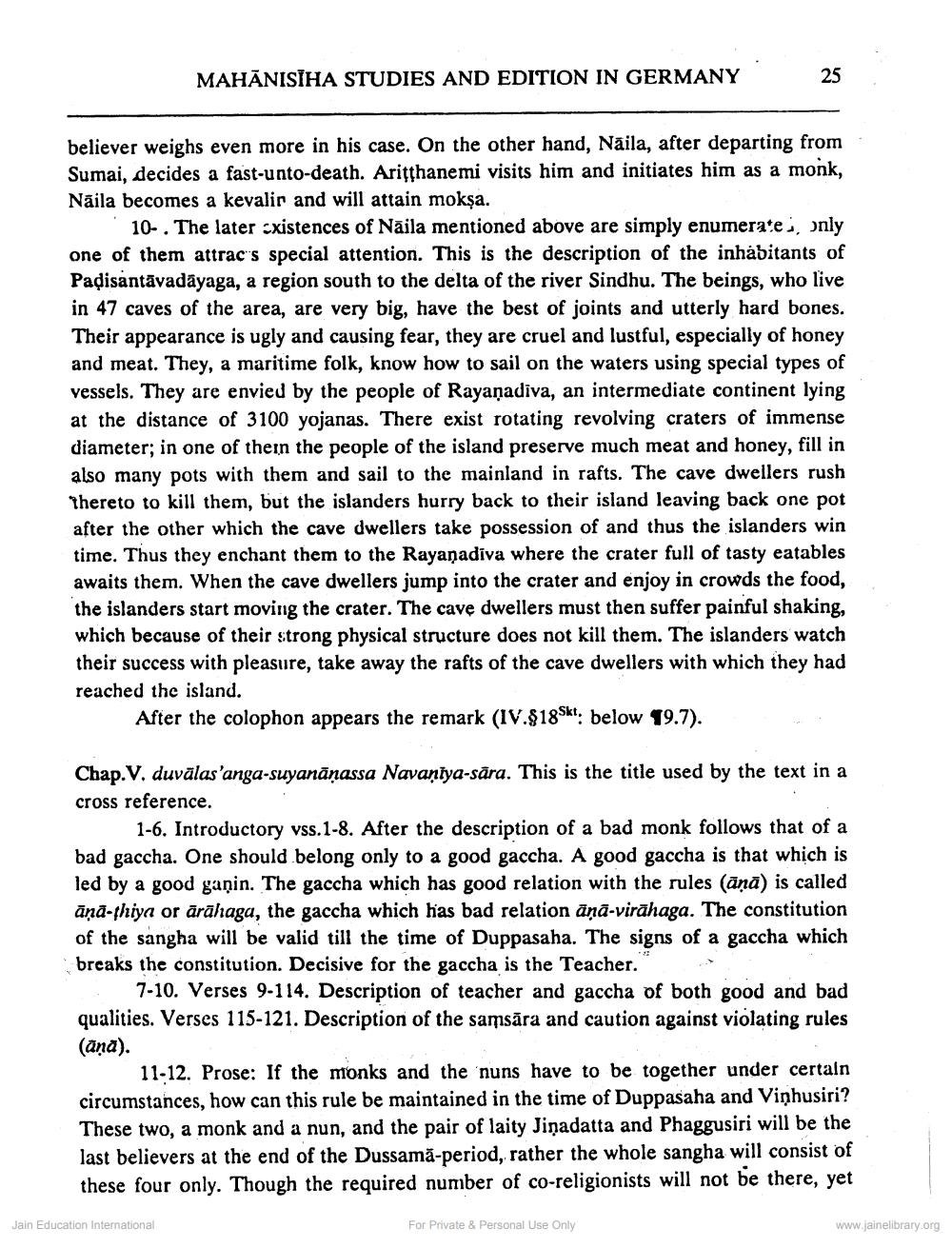________________
MAHĀNISİHA STUDIES AND EDITION IN GERMANY
believer weighs even more in his case. On the other hand, Naila, after departing from Sumai, decides a fast-unto-death. Aritthanemi visits him and initiates him as a monk, Näila becomes a kevalir and will attain mokşa.
25
10-. The later existences of Naila mentioned above are simply enumerate, only one of them attrac's special attention. This is the description of the inhabitants of Padisantavadayaga, a region south to the delta of the river Sindhu. The beings, who live in 47 caves of the area, are very big, have the best of joints and utterly hard bones. Their appearance is ugly and causing fear, they are cruel and lustful, especially of honey and meat. They, a maritime folk, know how to sail on the waters using special types of vessels. They are envied by the people of Rayanadiva, an intermediate continent lying at the distance of 3100 yojanas. There exist rotating revolving craters of immense diameter; in one of them the people of the island preserve much meat and honey, fill in also many pots with them and sail to the mainland in rafts. The cave dwellers rush. thereto to kill them, but the islanders hurry back to their island leaving back one pot after the other which the cave dwellers take possession of and thus the islanders win time. Thus they enchant them to the Rayanadiva where the crater full of tasty eatables awaits them. When the cave dwellers jump into the crater and enjoy in crowds the food, the islanders start moving the crater. The cave dwellers must then suffer painful shaking, which because of their strong physical structure does not kill them. The islanders watch their success with pleasure, take away the rafts of the cave dwellers with which they had reached the island.
After the colophon appears the remark (IV.§18; below 19.7).
Chap. V. duvalas'anga-suyanāṇassa Navaniya-sära. This is the title used by the text in a cross reference.
1-6. Introductory vss.1-8. After the description of a bad monk follows that of a bad gaccha. One should belong only to a good gaccha. A good gaccha is that which is led by a good ganin. The gaccha which has good relation with the rules (and) is called ana-thiya or ärahaga, the gaccha which has bad relation and-virahaga. The constitution of the sangha will be valid till the time of Duppasaha. The signs of a gaccha which breaks the constitution. Decisive for the gaccha is the Teacher.
7-10. Verses 9-114. Description of teacher and gaccha of both good and bad qualities. Verses 115-121. Description of the samsara and caution against violating rules (ana).
Jain Education International
11-12. Prose: If the monks and the nuns have to be together under certain circumstances, how can this rule be maintained in the time of Duppasaha and Viņhusiri? These two, a monk and a nun, and the pair of laity Jinadatta and Phaggusiri will be the last believers at the end of the Dussamã-period, rather the whole sangha will consist of these four only. Though the required number of co-religionists will not be there, yet
For Private & Personal Use Only
www.jainelibrary.org




